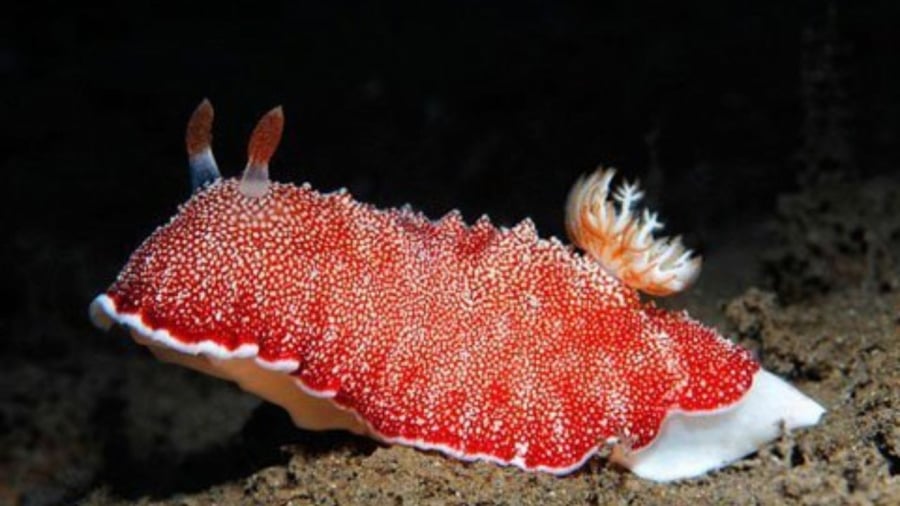The sea cucumber, Chromodoris reticulata, is an extraordinary marine creature that has left scientists awe-struck with its ability to shed and regenerate its penis within hours of mating. This discovery, made by Japanese researchers, has not only shocked the scientific community but has also opened up new avenues of exploration in evolutionary biology and animal reproduction.
A Shocking Discovery from the Waters of Okinawa
Scientists from Osaka City University and Nihon University in Tokyo, Japan, studied sea cucumbers in the shallow coral reefs off Okinawa. While observing the reproductive behavior of Chromodoris reticulata, they witnessed something unprecedented in the natural world: after mating, the sea cucumber’s penis would detach from its body, and within a few hours, a new reproductive organ would grow in its place, ready for the next mating cycle.
The Amazing Hermaphroditic Sea Creature
Sea cucumbers are hermaphrodites, meaning each individual possesses both male and female reproductive organs. This allows them to play dual roles during reproduction: releasing sperm as a male and receiving sperm as a female. However, what truly surprised scientists was the complex biology behind the replacement of the penis after mating.
In experiments, pairs of sea cucumbers were observed in tanks. After mating, each individual would separate from its partner and move away, carrying a “used” penis dangling behind. About 20 minutes later, this organ would automatically fall off.

Unraveling the Sea Cucumber’s Unique Internal Structure
Through dissections and analysis, scientists discovered a spiral-shaped structure inside the sea cucumber’s body, referred to as a “spare penis.” When the external genitalia falls off, this spiral unravels and rapidly develops into a new penis, preparing the individual for the next reproductive cycle within a matter of hours.
Dr. Ayami Sekizawa, the lead researcher, commented, “We believe that the internal spiral structure acts as a reserve, taking over the role of the discarded penis. This unique mechanism has never been observed in any other organism before.”
Uncovering the Biological Purpose Behind the Phenomenon
While the exact biological reason for this strange phenomenon remains unclear, scientists speculate that the sea cucumber’s penis, equipped with backward-facing spines, might serve to remove residual sperm from the partner’s previous mating encounters. Once this function is fulfilled, the organ may become redundant and is discarded to make way for a fresh, more efficient tool for the next mating session.
Professor Nils Anthes, an expert in evolutionary ecology at the University of Tübingen in Germany, suggested that shedding the penis could be a strategy for sea cucumbers to regenerate a cleaner and more effective “tool” for the next coupling, thus optimizing their chances of successful reproduction.
Biological Significance and Future Research Directions
The rapid and efficient regeneration of reproductive organs, as seen in Chromodoris reticulata, is an exceptionally rare phenomenon in nature. This discovery not only expands our understanding of reproductive biology but also holds potential inspiration for future research in regenerative medicine and tissue engineering.
Mr. Bernard Picton, an expert on invertebrates at the National Museum of Northern Ireland, remarked, “I’ve never seen anything like this. It truly defies our imagination when it comes to the wonders of the natural world.”
The discovery of the sea cucumber’s ability to shed and regrow its penis after mating is one of the most fascinating biological findings in recent years. It not only astonishes scientists but also prompts profound questions about evolution, molecular biology, and the regenerative capabilities of marine life. With its unique body structure and surprising reproductive mechanism, Chromodoris reticulata is indeed a captivating “living mystery” lurking in the depths of the ocean.

































